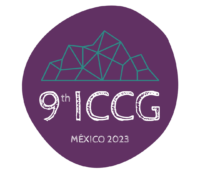El uso de las artes para analizar lo geográfico, se inscribe dentro de una serie de cambios en el pensamiento geográfico, iniciados en las dos últimas décadas del siglo XX donde destaca la reconsideración del papel y la significancia del espacio en la teoría social y en los procesos sociales; el surgimiento sin precedentes de la investigación dedicada a la relación entre espacio y sociedad; el reingreso de la geografía humana a las corrientes principales de la ciencia social y la filosofía; la renovada apreciación de la diversidad y de la diferencia con una consecuente diversificación del trabajo teorético y empírico y un cuestionamiento de las relaciones entre conocimiento geográfico y acción social que dan lugar a una gran proliferación de tópicos de investigación (Dear, 2001). En cuanto a la relación de la ecología política con las artes, conviene argumentar que al ser un campo que incluye las múltiples formas de acción colectiva en torno a conflictos ambientales y territoriales, las diferentes expresiones artísticas como la pintura, el cine, el video (Merlinsky y Serafini, 2020) y, en el caso específico de este trabajo, la literatura, son parte consustancial del mismo. Por otra parte, para poder inscribir este trabajo dentro de una temática que aborda la ficción realista y la ecología política, es necesario aclarar que en su abordaje se ha considerado que se pueden distinguir dos tradiciones teóricas sobre el extractivismo: la tradición dependentista y de raíz latinoamericana, que agrupa el concepto de extractivismo como modo de apropiación de los recursos naturales, estrategia de desarrollo dependiente y estilo de desarrollo insostenible; y la tradición propiamente extractivista, de dominante norteamericana y europea, que identifica el extractivismo con los procesos continuos de acumulación por desposesión/apropiación del capitalismo (Domínguez Martín, 2021). En este contexto para poder utilizar la literatura como fuente de información geográfica conviene apuntar que el encuentro entre los movimientos artísticos y las resistencias al extractivismo da cuenta de una significación común que refiere a entender el arte y practicar la política como la creación de nuevos conceptos de vida. En ese sentido conviene citar tres aspectos en los que el arte se relaciona con la ecología política y con los movimientos y organizaciones que le son esenciales. En primer lugar, el arte es un vehículo importante en la creación de narrativas. Las narrativas que se generan alrededor de aquello que es objeto de oposición, los objetivos colectivos y la forma de generar cambio tienen un rol crucial en la manera en que los movimientos y organizaciones se representan a sí mismos, tanto internamente como externamente. En segundo lugar, las prácticas artísticas –y en particular aquellas de carácter comunitario y participativo– son importantes para la creación y el mantenimiento de las identidades colectivas. La última, y quizás más importante, manera en que el arte contribuye a la acción colectiva, es a través de su potencial para activar la imaginación. En el estudio de los movimientos sociales y formas de acción colectiva recientes se popularizó el concepto de prefiguración, tanto en su dimensión ética como en su carácter de práctica social. En resumen, es posible decir que las artes, en general, y la literatura, en particular son un vehículo en la creación de narrativas que crean una identidad colectiva y que permiten activar la imaginación. En este trabajo se utiliza la novela policiaca, la cual, es una literatura realista que fue considerada durante un largo período como una literatura de segunda clase. En ella, existe una relación primaria con el territorio y el paisaje que surge del uso de la cartografía como producto de la obra a través de la cual se puede completar una imagen geográfica detallada, al mismo tiempo que puede identificarse el papel del espacio geográfico en la obra, rol que puede ir desde un simple escenario donde actúan los personajes o bien ser el protagonista central de la misma. Ahora bien, es precisamente este espacio geográfico el punto de partida que utilizan los autores para hacer una crítica del sistema capitalista imperante desde una narrativa fictiva. Bibliografía Berque, Augustin (1998), Être humains sur la terre, Gallimard/Le débat, Paris. Carreras, Carles, (1988), El uso de los textos literarios en geografía. en García B, A. (coordinadora) Métodos y técnicas cualitativas en geografía social. Editorial Oikos-Tau. Barcelona. Collot, Michel, (2014), Pour une géographie littéraire, Corti, Paris. Dear, Michael (2001), “The Postmodern Turn”. en Minca, C., (Editor), Postmodern Geography : Theory and Praxis, Blackwell Publisher Ltd., Oxford, 2001, pp. 10-24. Domínguez Martín, Rafael, El extractivismo y sus despliegues activismo y sus despliegues conceptuales, Revista Territorios y Regionalismos, núm. 4, pp. 1-26, 2021, Universidad de Concepción García Chiang. Armando (2004), Ciudad y novela policiaca, Revista Ciudades, No. 72 Vida urbana y narrativas literarias, pp. 22-28. Merlinsky Gabriela y Paula Serafini (Compiladoras) (2020) Arte y Ecología Política, Ciudad Autónoma de Buenos Aires, Universidad de Buenos Aires. Instituto de Investigaciones Gino Germani – UBA. Roas, David « ¿Por qué leemos (todavía) novelas policiacas? » en Quimera nº 259-260, julio-agosto 2005. En línea http://esquimal.ucoz.com/publ/literatura/por_que_leemos_todavia_novelas_policiacas/1-1-0-33 (Consultado el 26/11/2022). Salter, Christopher L. y Lloyd, William J. (1989) Landscape in Literature, Ressource Papers for College Geography, No. 76-3, Washington D.C., Association of American Geographers. Westphal, Bertrand (2007) La Géocritique. Réel, fiction, espace, Paris, Minuit.
